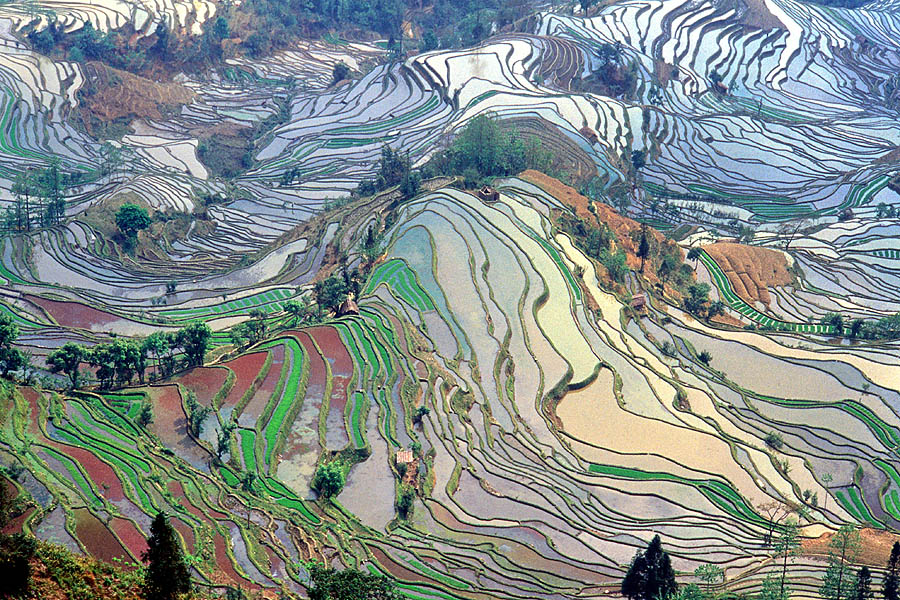Contemporary Hmong people cannot be characterized as subscribing to a single religion. Missionaries to Southeast Asia converted many Hmong people to Christianity
beginning in the 19th-century and many more have become Christian since
immigrating from Southeast Asia to the West. However most Hmong people today continue to maintain traditional
spiritual practices that include Shamanism and Christianity.
Shamanism is one of the most practiced religions by the Hmong people. These Shamanistic spiritual beliefs are combined with their beliefs related to
health and illness. In traditional Hmong spiritual practices, one does
not separate the physical well-being of a person from their spiritual
health. According to these beliefs, everything
possesses a spirit, both animate and inanimate objects. When doing my research on the Hmong, i found this to be quite interesting. . The spirits of deceased ancestors are
thought to influence the welfare and health of the living as well. Hmong
perform rituals which include the offering of food and spirit money and burning incense to appease the dead and living spirits and earn their favor in the real world.
Friday, March 28, 2014
Thursday, March 27, 2014
World of the Hmong
The Hmong people originally were farmers, most living in small villages high in the mountains. They lived in these small villages and farmed all different types of crops as well as cattle and other animals. The Hmong were said to have originally came from Yangtze river basin in China. After moving from this area and migrating more south in China, they adapted to the mountain areas of Southern China and adapted to this area. After moving, the Hmong really started to become a more agriculturally based society.
Today, the Hmong have adapted to the country's society in which they live. Although they adapted to the main culture, they still maintain strong cultural bonds to their heritage and ethnicity by engaging in various ethnic activities. Doing this allows for the cultural survival of the Hmong throughout the world and the countries in which they live.
Although the Hmong have kept various aspects of their culture, they have acquired many other various jobs and traits. Handbag making has became a large source of the Hmong income in China and Laos. Hmong handbags have become very famous and are known throughout the world.
Today, the Hmong have adapted to the country's society in which they live. Although they adapted to the main culture, they still maintain strong cultural bonds to their heritage and ethnicity by engaging in various ethnic activities. Doing this allows for the cultural survival of the Hmong throughout the world and the countries in which they live.
Although the Hmong have kept various aspects of their culture, they have acquired many other various jobs and traits. Handbag making has became a large source of the Hmong income in China and Laos. Hmong handbags have become very famous and are known throughout the world.
Monday, March 24, 2014
Hills and Mountains of Southern China: Homeland of the Hmong
In China the majority of the Hmong today live in Guizhou, Sichuan and Yunnan. This group of people originally came from this part of Southern China and still reside there today. The Hmong population in China is estimated at about 3 million people. The majority of Hmong live in the three cities that I listed in the first sentence of this blog post.

The area in Southern china that the Hmong originally came from is a very mountainous region. The region that these people call home is known for farming and other different agriculture methods. Below is a picture of the Yunnan region where many Hmong reside today.

(Source: Yunnan Wikipedia)

(Source: Info Please)
The area in Southern china that the Hmong originally came from is a very mountainous region. The region that these people call home is known for farming and other different agriculture methods. Below is a picture of the Yunnan region where many Hmong reside today.

(Source: Yunnan Wikipedia)
The Yunnan province, where many Hmong come from and are located today, is located in the very far southwest in China (view map above). The region is very mountainous Most of the Hmong people live in eastern part of the province. Yunnan is very rich in natural resources and has some of the most diverse plant life found anywhere in the world. This region also has the highest number of reserves of aluminum, copper, and various other metals.
Thursday, March 20, 2014
History of the Hmong
Hmong people generally came from the hill and mountain area just south of China. According to different sources, Hmong people lived in China for 2000 years before generally migrating south in the 1700s. They moved to escape the oppressive Qing Dynasty.
(Source: Coco Kelly)
Members of the Hmong ethnic group have lived in this mountainous and hilly region of Southern China and Southeast Asia for thousands of years, though the Hmong have never had their own country. In the 1970s, many Hmong were recruited by the United States to help them fight the Laotian and Vietnamese Communists. Hundreds of thousands of Hmong have since left Southeast Asia and brought the intriguing Hmong culture to distant parts of the world. About 3 million Hmong remain in China, 780,000 in Vietnam, 460,000 in Laos, and 150,000 in Thailand. Hmong people also reside in various other parts of the world as well but these areas are the most notable.
The Hmong people have a history of conflict between them and the Chinese government. Because of this, they have migrated to various parts of China and the world (such as places in above paragraph). Today they have adapted to the various countries in which they live. I will discuss more of this in a later blog post on this group and cultural survival.
Subscribe to:
Comments (Atom)

